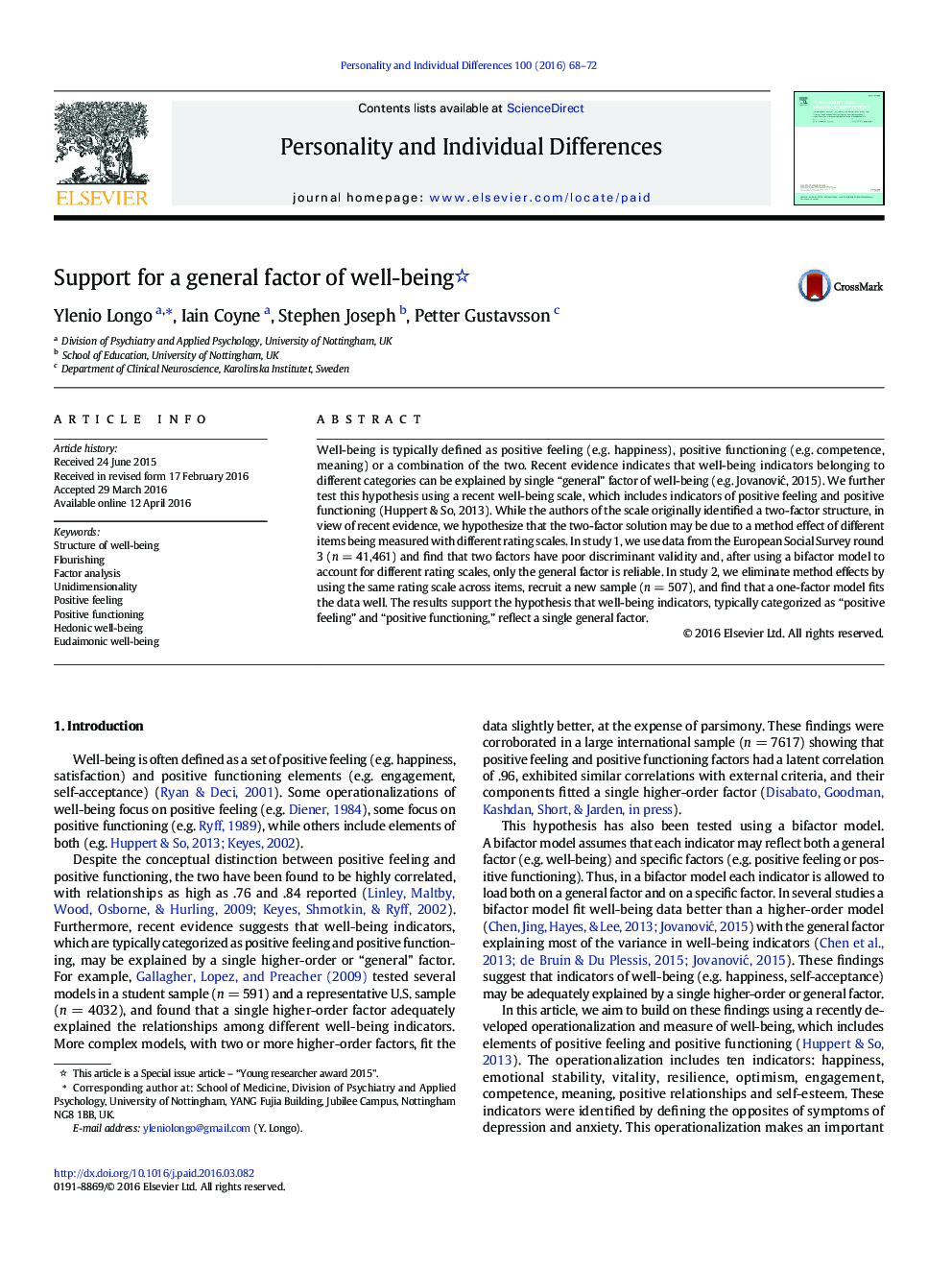| Article ID | Journal | Published Year | Pages | File Type |
|---|---|---|---|---|
| 889627 | Personality and Individual Differences | 2016 | 5 Pages |
•Well-being indicators are often divided into two groups: feeling and functioning.•Recent evidence indicates that a single factor may adequately fit well-being data.•Two studies supported a single general factor of well-being.
Well-being is typically defined as positive feeling (e.g. happiness), positive functioning (e.g. competence, meaning) or a combination of the two. Recent evidence indicates that well-being indicators belonging to different categories can be explained by single “general” factor of well-being (e.g. Jovanović, 2015). We further test this hypothesis using a recent well-being scale, which includes indicators of positive feeling and positive functioning (Huppert & So, 2013). While the authors of the scale originally identified a two-factor structure, in view of recent evidence, we hypothesize that the two-factor solution may be due to a method effect of different items being measured with different rating scales. In study 1, we use data from the European Social Survey round 3 (n = 41,461) and find that two factors have poor discriminant validity and, after using a bifactor model to account for different rating scales, only the general factor is reliable. In study 2, we eliminate method effects by using the same rating scale across items, recruit a new sample (n = 507), and find that a one-factor model fits the data well. The results support the hypothesis that well-being indicators, typically categorized as “positive feeling” and “positive functioning,” reflect a single general factor.
